If you haven’t checked out the Plebity conference on Free Speech and the Left, I suggest checking out these online interviews. It is essential that leftists and liberals don’t allow the right (which is temperamentally and historically uncomfortable with open dialogue) to “own” the cause of free speech.
Turtles on the Road
June 16, 2023Snapping Turtles leave the ponds, rivers, and lakes this time of year to lay their eggs. They particularly like roadsides for this, since this is where sand is accumulating. I once encountered a snapper on the road at least three feet in diameter, the size of a superhero’s shield. I got it safely off the road, then saw in my rearview mirror that a guy was putting the turtle in the bed of his pickup truck. Turtle soup. I hated to see such a huge mama meet that fate.
There is a story I heard when I moved to the Adirondacks, that there are huge snapping turtles living in Tupper Lake that grab swimmers and drag them to the bottom where they drown. There is no truth to this; it’s just a story people like to scare themselves with, like the one about Daddy Longlegs being deadly poisonous.
Driving to work the other day, I saw a car coming the other way swerving to avoid a snapper. I got out of the car and saw that there were two snappers: one at the side of the road actively laying, the other on the pavement. I positioned my car in front of her with hazard lights blinking and persuaded her to hurry and cross to the other side. I was unwilling to pick her up, because snappers have powerful jaws and can cause significant injury. I stomped on pavement nearby in my dress shoes, and either the sound or the vibration motivated her. As she lumbered across the road, I tap danced behind her to encourage the forward motion.
The snapper below is another I found on the road last week. They’re all over the place. It’s a good idea to stop and help them off the pavement if you can. Snapping Turtles are not endangered species, but it’s a shame for them to be captured for soup before they can lay their eggs. Plus, they ruin tires if you run over them.
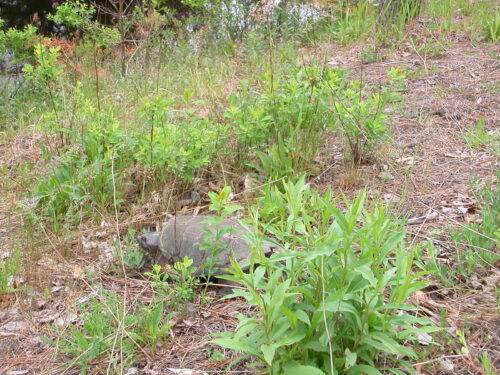
Blame Canada! Blame Canada!
June 9, 2023Who knew that silly song from South Park would someday be relevant? The preoccupation this week has been poor air quality from forest fires up in Canada. We’re spoiled in the Adirondacks, used to pristine air quality, and I had headaches and burning throat until winds pushed the smoke down-country. The frequent rain here also helped. I plan to resume my outdoor sports tomorrow, weather permitting.
I started wondering about the animals affected by the forest fires. Yes, it’s sad and wrong for animals to suffer from fires caused by human activity, but nature is the cause of many fires, so I reasoned there must be adaptive responses.
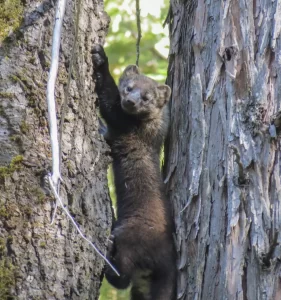
Forest fires are a primary method for promoting ecological diversity in western North America. Fires open the forest canopy and allow tree and grass species to flourish, which in turn protects small mammals and provides food for deer. In the Adirondacks, where there is high precipitation, fires are rare (thank Goddess!) and beaver dams and snowstorms open the canopy. Otherwise, the forest composition would eventually become mostly beech and hemlock.
Forest fire affect on animals depends on the intensity of the fire. There are low-intensity fires, where the dry brush and shade-resistant plants are burned away, and the tree trunks are scorched, while the tree roots remain healthy and the taller trees remain standing. The ash from these fires enriches the soil. The high-intensity fires create high temperatures that damage the roots and turn trees into dead snags. The ash produced is toxic to some plant species and most trees do not grow in the area for years or decades. A mosaic fire is a low-intensity fire with pockets of high-intensity heat. This is actually a fine scenario, from the standpoint of ecological diversity.
In a low-intensity or mosaic fire, animals shelter in place. Small rodents go underground, bears climb to the tops of trees, medium-sized animals and some birds appropriate tree cavities, while other birds and deer move to the periphery of the fire. When the fire is extinguished, the animals move back into their territories.
In a large scale high-intensity fire, such as what is happening in Quebec right now, animals migrate quickly out of the affected area. This brings them into conflict with animals in other territories or with humans. The animals cannot move back into their territories when the fires are gone because there is nothing for them there. While some grass cover will emerge, it will take years for the area of a large-scale burn to support diverse wildlife. Large scale, catastrophic fires particularly affect animals that live in deep mature forests such as fishers and goshawks.
I haven’t mentioned the affect of large-scale high-intensity fires on fish. Landslides from denuded forests containing toxic ash slide into waters and kill the fish.
This is a depressing scenario, but the good news is that forests will recover. We humans (not just Canadians) need to become better at preventing this situation, which is mostly the result of our activity.
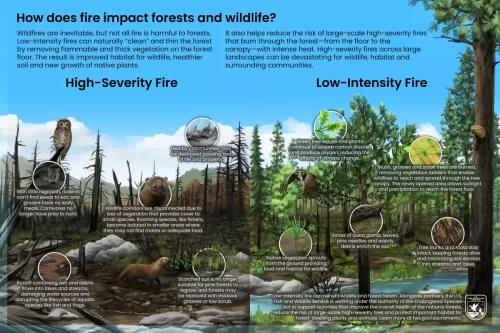
Garter’s Point
June 2, 2023Last Saturday, I hiked to Kelley’s Point, a stopping point on Long Lake along the 136 mile Northville-Placid Trail. I traveled about ten miles of it, and it was a difficult hike due to the frequent blow-down, which was irritating but not impassable.
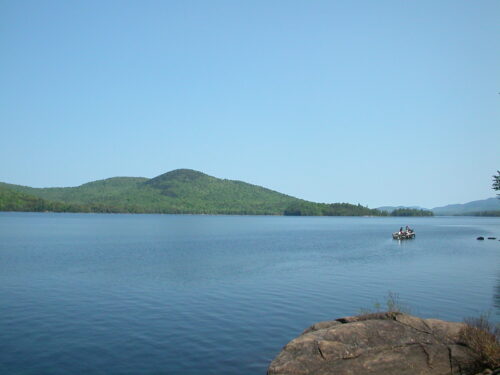
Kelley’s Point is the site of an old hotel, and the stone steps leading down to the lake still remain. There were several campers there Saturday, who evidently paddled in.
I was resting on a rocky outcropping at the Point when a huge Garter Snake slid onto the rock. It had the characteristic green stripe, but it was so big that I doubled checked to make sure there was no rattle. It came straight for me, and I had to move or it would have been on my lap.
An unusual encounter with an animal such as this is always an important sign. This snake was making sure I got the message. Snakes to me are about change. I have been spending more time outdoors, vowing to get back in shape after the life problems that distracted me the past few years. The snake coming to me at that particular point was telling me that my efforts would be well rewarded.
In my first book, Invoking Animal Magic, I have a whole chapter the significance of the snake.
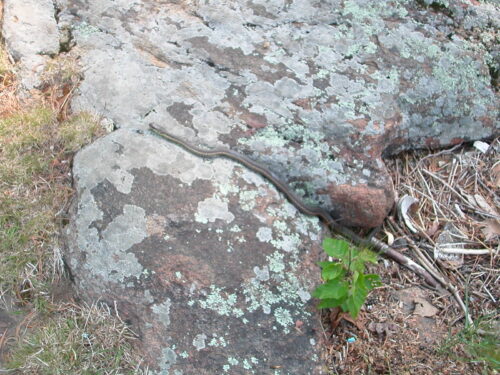
Otter Play Date
May 26, 2023Saturday I was out with a group and we saw an otter. It was running out of a marshy stream into the woods, bounding quickly.
Otters to me represent play. About twenty years ago, in late winter, I was trudging along a seldom used path with a friend and we saw three otters playing in an icy stream. They would float on their backs, dive under the water, chase and scare each other – they were having a great time.
It’s Memorial Weekend, the start of summer, and I’m ready to cut loose. The licensing board disallowed 1/4 of my CEU credits, for totally bogus reasons I could not have foreseen, and I had to scramble this month to come up with enough before my license expired. Just when I thought I was done and could relax a little: more boring courses. The most painful part was all the patronizing rich girl MSW’s on a teaching mission to proselytize about preferred language on some surprising topics. I use cognitive restructuring in therapy, rephrasing problems to help clients achieve their goals, but I think this is a completely unethical trend, this cognitive restructuring on a societal level by supposed experts without the permission of ordinary people. It’s a power and control game, and it certainly won’t fly with the working class clientele I deal with. They like plain straightforward language and are rightly suspicious of constantly changing “preferred” terms. What a load of nonsense I’ve been dealing with this year!
So my compelled dumb useless classes are finally done for awhile and I really truly am ready for some down time. I’m like an otter: full of energy I’m determined to direct in enjoyable ways.
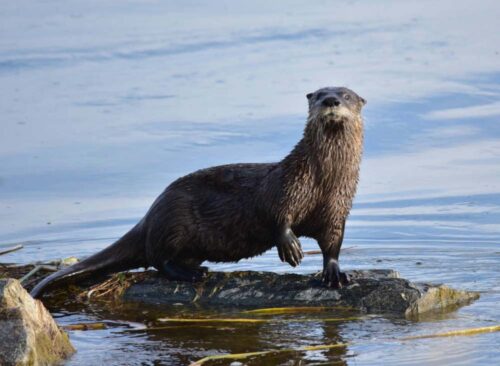
It’s finally feeling like spring
May 19, 2023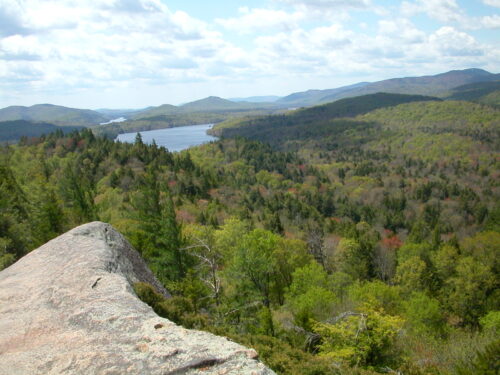

Black fly season in the Adirondacks is quite beautiful, even when it feels like a bite on the neck. I’ve had difficulty adjusting to a head net in the past, but this year it has felt surprisingly comfortable.
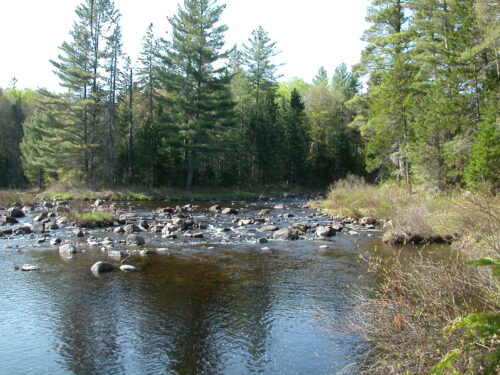
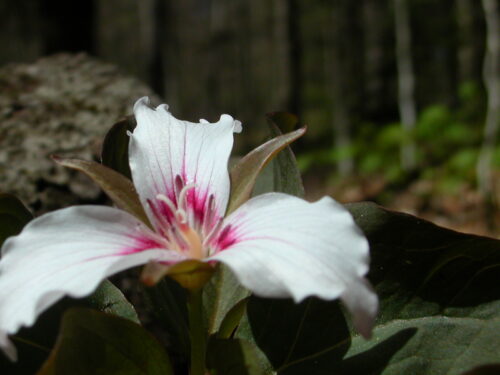
Not many hikers here at the moment, and I have the woods to myself. The birds are back, though. One of my favorite sounds is the drumming of the male ruffed grouse. I’ve never actually seen him do this, but I’ve heard him often enough.
Busy Beaver
May 11, 2023An Adirondack Spring
April 14, 2023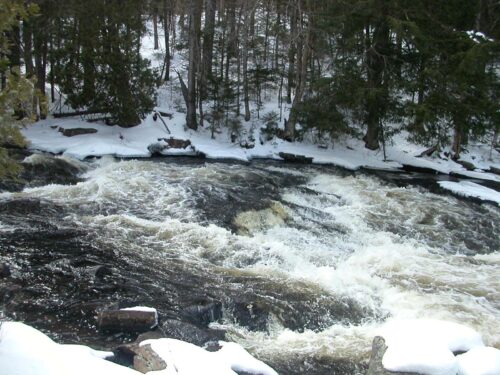
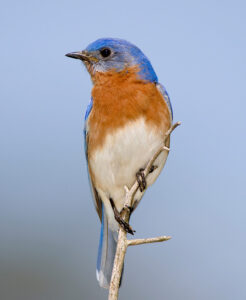
Well, the warm weather has arrived. Temperatures in the mid-70s melt the snow in the roads and the fields, at least in the lower elevations. There is a constant roar from swollen streams and rivers. I hear it even at home indoors. Backwoods activities are approached with caution, as rising stream levels can cut off retreat.
I saw the first Turkey Vulture of the season this past week. Bluebirds are singing. I heard the first Northern Goshawk last week and retreated, with perhaps an overabundance of caution. They’re courting, not nesting, right now.
Wild animals, like humans, are much more active. Yesterday and today, while cycling in the woods, I heard my favorite songbird, the Winter Wren. It will continue singing through the Summer Solstice.
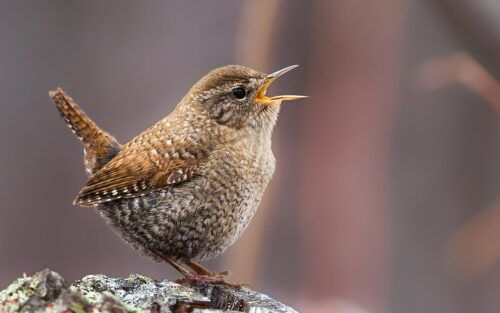
A snowy spring day
April 4, 2023You guys are probably ready for flowers and leafy trees, but this is what it looks like here in the Adirondacks on the second week of spring.
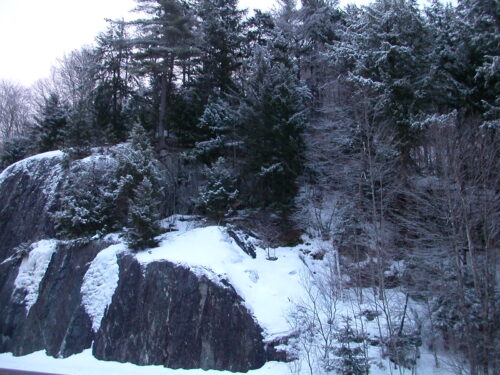
Even so, there are noticeable changes, more than just the longer days. Crows and ravens are more active.
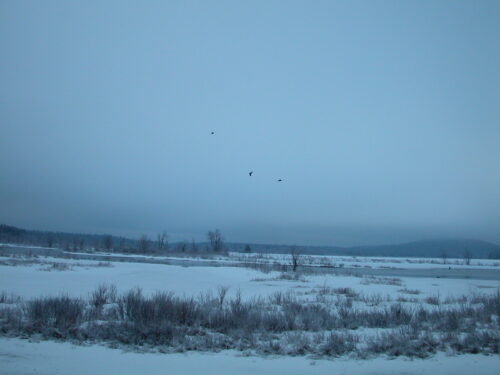
There is open water, reflecting the warmer days interspersed in the heavy snowfalls. With the open water comes ducks and geese.
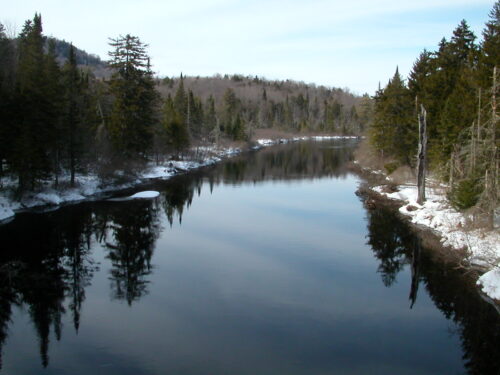
Redbirds begin singing and Chickadees become much more vocal.
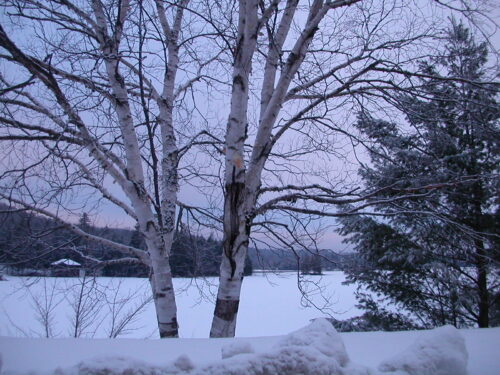
Not many tourists this time of year. It is a time of quiet waiting.
